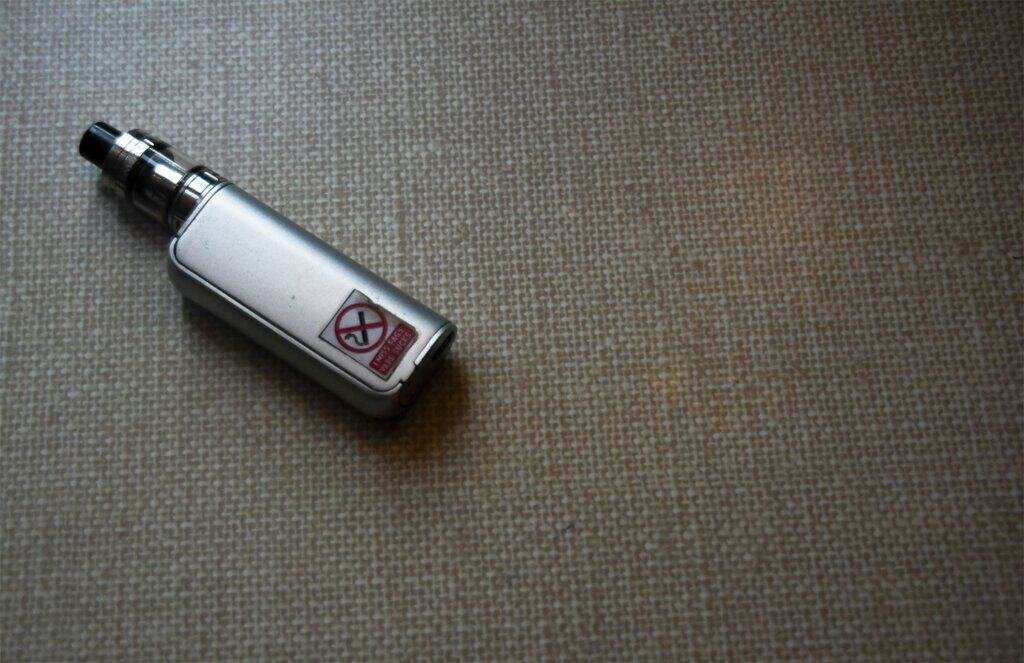
The debate between using matches and lighters often extends beyond convenience to health and environmental concerns. This article examines whether matches, including permanent matches, are a healthier choice compared to traditional lighters.
We delve deeper into the health impacts of both fire-starting tools, considering their compositions, emissions, and environmental effects.
Composition and Emission of Traditional Matches

Chemical Composition of Matches
Traditional matches are generally made of a wooden stick and a head composed of a mixture of chemicals like potassium chlorate, sulfur, fillers, and stabilizers. The red or white phosphorus used in the strike strip on the side of the matchbox is essential for ignition.
Emissions During Ignition and Burning
When a match is struck and burns, it emits a range of substances, including sulfur dioxide, carbon dioxide, and trace amounts of other compounds. These emissions, while generally minimal in quantity, are a consideration in confined spaces.
Health Implications of Emissions
The health impact of these emissions is typically low due to the short duration and minimal quantity of exposure. However, individuals with certain respiratory conditions or sensitivities may be more affected by these emissions.
Comparative Analysis with Lighter Emissions
Compared to the butane used in lighters, the emissions from matches do not include hydrocarbon gases. However, the environmental and health impact of disposable matchsticks and the production process is a factor to consider.
Environmental Considerations of Match Use
While individual use of matches has a negligible impact on the environment, large-scale production and disposal, especially of safety matches, contribute to wood consumption and waste. The process of manufacturing matches also involves energy and resource use.
Health Aspects of Permanent Matches

Chemical Composition of Lighter Fluid in Permanent Matches
Permanent matches typically require lighter fluid, which is mainly composed of volatile organic compounds (VOCs) like naphtha or butane.
Emission of VOCs During Use
When a permanent match is ignited, it emits VOCs due to the burning of lighter fluid. While the amount is relatively small per use, frequent use can lead to increased exposure to these emissions, which may affect indoor air quality and respiratory health.
Risk of Accidental Ingestion or Skin Contact
Lighter fluid can be harmful if ingested or if it comes into prolonged contact with the skin. Safe handling and storage of permanent matches and their fuel are crucial to minimize these risks.
Proper Ventilation and Use
Using permanent matches in a well-ventilated area is important to reduce the inhalation of fumes. This is particularly crucial in enclosed spaces where fumes can accumulate.
Healthier Alternatives to Traditional Lighter Fluid
For those concerned about the health impacts of traditional lighter fluids, there are alternative fuels that are less toxic and more environmentally friendly, though they may vary in efficiency and suitability for permanent matches.
Impact of Frequent Exposure to Lighter Fluid Fumes
Frequent exposure to lighter fluid fumes, as may occur with regular use of permanent matches, can have health implications, particularly affecting respiratory health. Understanding these risks is vital for users who rely heavily on these tools.
Lighters and Chemical Exposure

Risks Associated with Butane Inhalation
Inhaling butane fumes, either accidentally or through misuse, can pose significant health risks, including respiratory issues and, in extreme cases, neurological effects due to its narcotic properties. Proper use and storage of butane lighters are essential to mitigate these risks.
Impact of Long-Term Exposure to Lighter Emissions
Regular and prolonged use of butane lighters can lead to chronic exposure to its emissions. This can have cumulative health effects, particularly affecting respiratory health and potentially contributing to indoor air pollution.
Environmental Considerations of Lighter Use
Apart from direct health implications, the environmental impact of manufacturing, using, and disposing of plastic butane lighters is another health consideration. The production process contributes to resource depletion and pollution, while the disposal adds to plastic waste.
Environmental Impact Comparison

Manufacturing Process and Resource Use
The manufacturing process for both matches and lighters involves significant resource use. Matches, particularly safety matches, require wood or paper, while lighters, especially disposable ones, use plastics and metals, contributing to resource depletion.
Emissions and Chemicals Released
The production of matches and lighters involves emissions of various chemicals. Matches release emissions during manufacturing and use, while lighters contribute to greenhouse gas emissions during production and when butane is released.
Waste and Pollution from Disposal
Disposable lighters contribute significantly to plastic pollution, ending up in landfills or oceans. Used matches, being predominantly wood or paper, have a smaller footprint but still contribute to waste, especially if treated with chemicals.
Impact on Air Quality and Climate Change
The use of lighters contributes to air pollution and climate change through the release of butane, a hydrocarbon. Matches also contribute to air pollution, though on a smaller scale per use, but large-scale production and use can have a cumulative effect.
Sustainability and Eco-friendly Alternatives
Both matches and lighters have eco-friendly alternatives. Matches made from sustainable wood or recycled materials, and refillable, metal lighters reduce environmental impact, promoting more sustainable fire-starting options.
User Safety and Handling

Safe Handling Practices for Matches
When using matches, it’s important to strike them away from the body and flammable materials. Once lit, they should be handled cautiously to prevent burns or starting unintended fires. Disposing of spent matches properly is also crucial to avoid smoldering and fire risks.
Risk of Accidental Burns and Fire
Both matches and lighters carry the risk of accidental burns and fire. Using them in a controlled environment, away from combustible materials, and ensuring they are completely extinguished after use can mitigate these risks.
Proper Storage and Maintenance
Proper storage and maintenance of matches and lighters are essential for safety. Matches should be kept dry and away from heat sources, while lighters should be stored in cool, ventilated areas. Regularly inspecting lighters for leaks or damage and replacing them when necessary is also important.
Allergies and Sensitivities to Chemicals

Common Allergens in Matches and Lighters
Matches contain chemicals like potassium chlorate and sulfur, while lighters predominantly use butane. These substances can trigger allergic reactions or sensitivities in some individuals, such as skin irritation or respiratory issues.
Skin Reactions to Match and Lighter Chemicals
Direct contact with the chemicals in matches and lighters, especially prolonged or repeated contact, can cause skin reactions in sensitive individuals. These reactions can range from mild irritation to more severe dermatitis.
Respiratory Sensitivities from Inhalation
Inhaling fumes from matches or lighters can aggravate respiratory conditions, especially in individuals with pre-existing conditions like asthma. The small particles and gases emitted during ignition can be irritants.
Long-Term Exposure and Sensitivity Development
Regular use of matches or lighters can lead to the development of sensitivities or worsening of existing allergic reactions. Being aware of the signs of sensitivity and reducing exposure can help manage these risks.
Choosing Hypoallergenic Fire-Starting Tools
For those with chemical sensitivities, seeking hypoallergenic alternatives or tools that minimize direct chemical exposure can be beneficial. This may include matches with fewer additives or lighters using cleaner-burning fuels.
FAQ
Q1:Are there any non-chemical alternatives to matches and lighters for those with sensitivities?
A:Yes, mechanical fire starters like flint and steel or ferrocerium rods offer non-chemical alternatives and are generally safe for people with chemical sensitivities.
Q2:Can the fumes from lighters or matches trigger asthma or other respiratory conditions?
A:Yes, the fumes from both lighters and matches can potentially trigger asthma attacks or exacerbate other respiratory conditions, particularly in poorly ventilated areas.
Q3:Is it safer to use matches or lighters in terms of chemical exposure?
A:This depends on individual sensitivities and the specific type of matches or lighters. Generally, matches may have fewer volatile chemicals compared to butane lighters, but they still involve some chemical exposure.
Q4:How can I reduce my exposure to chemicals when using matches or lighters?
A:Use these tools in well-ventilated areas, avoid inhaling directly from the flame or fumes, and consider using matches or lighters with fewer additives or cleaner fuels.
Q5:Are there specific brands of matches or lighters recommended for people with chemical sensitivities?
A:Brands offering matches with fewer chemical additives or lighters with cleaner-burning fuels are preferable. Researching and choosing hypoallergenic or eco-friendly options can be beneficial.
Q6:Can the use of matches or lighters contribute to indoor air pollution?
A:Yes, both matches and lighters can contribute to indoor air pollution, especially if used frequently in enclosed spaces. Proper ventilation is important to mitigate this risk.
Conclusion
Deciding whether matches or lighters are healthier is a nuanced consideration, entailing a balance between individual health concerns, environmental impacts, and practical use. Matches, including traditional and permanent types, involve exposure to certain chemicals and pollutants, but typically in minimal amounts that pose little risk during occasional use. Lighters, on the other hand, especially butane variants, present potential health risks due to volatile organic compounds, particularly with frequent use. However, technological advancements have led to cleaner, more eco-friendly lighter options. The environmental angle also plays a critical role, with the disposal and manufacturing processes of both matches and lighters carrying ecological footprints. For individuals with specific allergies or sensitivities, the choice may lean towards hypoallergenic or less chemically intensive options. Ultimately, the healthier choice hinges on an informed assessment of usage patterns, environmental consciousness, and personal health considerations, aiming to strike a balance that aligns with one’s lifestyle and values.


